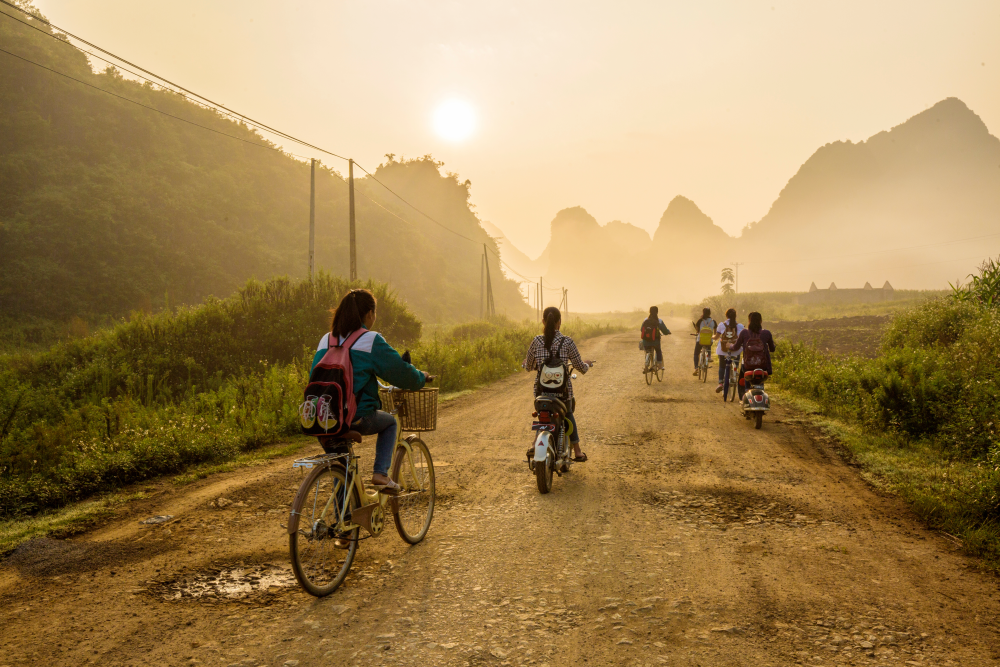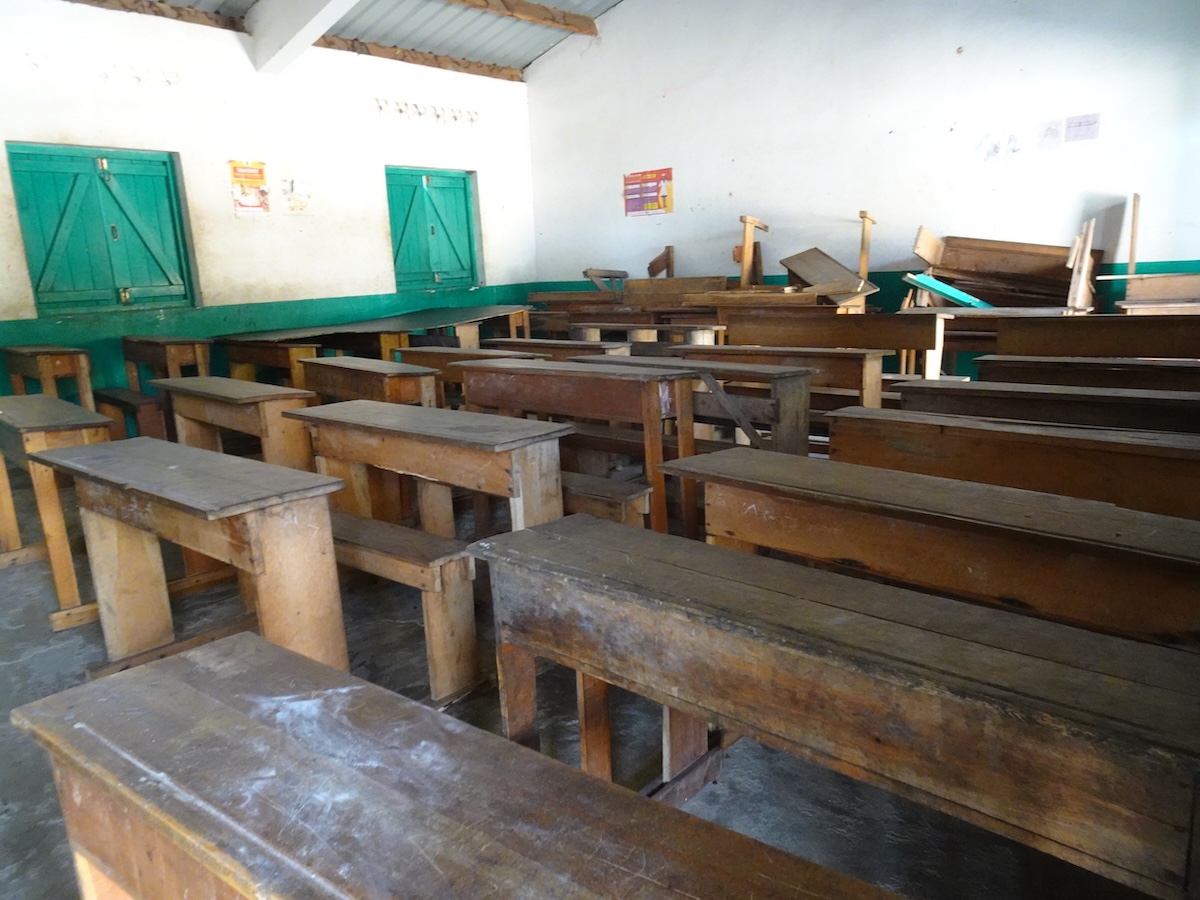Recommended
The controversy around the International Finance Corporation (IFC)’s investment in Bridge Academies, a for-profit education provider in Africa and India, is not going away. Indeed, World Bank President Ajay Banga has committed to an external investigation of the entire fiasco.
To recap, the IFC, the private-sector arm of the World Bank Group, invested $13.5 million in Bridge’s parent company NewGlobe Schools between 2013 and 2016, and failed to act appropriately in response to allegations of sexual abuse at schools in Kenya. The IFC divested in 2022 but is still reckoning with the fallout, including the question of its responsibility to the victims, as highlighted by my colleague in this post. (The client, Bridge Academies, has refused to provide any form of restitution and its website asserts that Bridge is “leading the way in safeguarding.”)
The NewGlobe Schools investment was investigated by the Compliance Advisor Ombudsman (CAO), the accountability arm of the IFC responsible for addressing complaints by communities affected by IFC projects and, when appropriate, proposing actions to bring clients into compliance with IFC environmental and social (E&S) guidelines. The CAO has no enforcement authority—it can only encourage the IFC to act. While ostensibly a separate, independent entity, there are troubling claims that the IFC interfered with the CAO investigation.
The Bridge investigation highlighted two significant accountability gaps: 1) that the CAO lacked the independence and authority to do its job effectively; and 2) that the IFC lacked sufficient leverage to influence client behavior, especially after exiting an investment. Both gaps are being addressed by the World Bank Board.
A bridge too far
As my colleagues discuss here, it is a grim truth that children—especially girls—face high levels of sexual violence at schools. Prevalence of sexual assault is especially high in sub-Saharan Africa, to devastating effect—girls face stigmatization, isolation, high rates of absenteeism, and unwanted pregnancy, all of which greatly impair their ability to live healthy and productive lives.
The IFC’s investment in Bridge was made after the release of Kenya’s first Violence Against Children Survey, which found that one in three females and one in five males experienced at least one episode of sexual violence before reaching age 18, and that about twenty percent of incidents occurred in schools. In other words, the risks were knowable.
In May 2018, the CAO launched an investigation following a complaint from a Kenyan nongovernmental organization (NGO) alleging that Bridge was failing to meet the IFC’s safeguards relating to health, safety, and labor standards. As detailed in its October 2023 report, the CAO found that the IFC failed to consider the project’s potential risks of child sexual abuse (CSA) or the ability of Bridge Academies—a start-up—to satisfy safeguard requirements related to the risks and impacts of CSA. According to the CAO report, these failures continued after the IFC was alerted to CSA incidents in 2013, 2016, and 2017. In its own report—released in March 2024—the IFC accepted most of the CAO’s findings and laid out an action plan to address the harms caused by the Bridge investment.
From roads to bridges
The Bridge investigation could have turned out differently if the public and private arms of the World Bank Group worked better together. The IFC case happened shortly after the World Bank came under fire for its role in the Uganda Transport Sector Development Project, a case where road workers were alleged to have had sexual relations with minor girls and sexually harassed female employees. As a government (versus private) project, the investigation was conducted by the Inspection Panel, the World Bank’s accountability mechanism, not the CAO. In its August 2016 report, the Inspection Panel found—among other things—that the World Bank failed to properly assess the potential risks and impacts of the project related to gender-based violence and child protection.
The project was suspended, and the World Bank later published a report of the Bank failures that allowed the harms from the project to go unchecked. It also developed a good practice note in 2019 on how to manage sexual abuse and harassment risks in major civil works projects, which was itself based on recommendationsby the Global Gender-Based Violence Task Force established by the World Bank in response to the abuses. In 2021, the Bank introduced a new policy to disqualify contractors for failing to comply with gender-based violence (GBV)-related obligations for at least two years.
Unfortunately, none of these new measures applied to the IFC. In addition, one finding of the CAO’s Bridge investigation was that “IFC apparently lacked institutional awareness of related developments in the broader World Bank Group,” including the creation of the Gender-Based Violence Task Force. This is remarkable considering the Bank’s GBV task force was a high-profile initiative and media attention to the issue was significant.
Burning bridges
This investigation exposed weaknesses in the CAO’s governance structure which undercut its independence and authority. The key flaw was that until mid-2021, the CAO reported to the World Bank President, not the Executive Board. The President’s office lacked the capacity and will to effectively support the CAO and was in no way immune to IFC pressure to reign in it.
When I served on the Executive Board of the World Bank Group (2015–2018), the CAO was regularly undermined. It was not unusual for the IFC to dismiss CAO investigations and findings with perfunctory responses because unlike the Inspection Panel, the CAO was not required to provide a Management Action Plan (i.e., a series of steps in response to investigation findings).
In the case of Bridge, the CAO was hampered by the negotiation of a confidentiality agreement between the IFC and Bridge—without its knowledge or involvement—binding the CAO from including information in its report that Bridge deemed confidential. (All CAO reports are made public.) The broader question of IFC efforts to influence the investigation itself will now be the subject of a separate investigation.
In 2019, the Board called for an independent external review of the CAO’s role and effectiveness. Released in 2020, the review found that the IFC successfully brought clients into compliance with its performance standards in only 13 percent of CAO cases. Another 35 percent were partly resolved. For half of all cases, the responses were unsatisfactory.
The review put forward eleven recommendations to strengthen the independence and effectiveness of the CAO. I want to highlight several which would have significantly changed the trajectory of the Bridge investment had they been in place at the time. These are:
- That the CAO report to the Board instead of the President;
- that IFC support clients with high quality E&S advice when things go south and use “available leverage” as fully as necessary to move the client to meet its responsibilities;
- that IFC be required to develop an action plan in response to all CAO investigation requirements; and
- that clients be required to set aside their own resources to remedy instances of non-compliance with E&S requirements for up to two years after the financial relationship with the client ends.
Bridging gaps
The review led to a new CAO policy which took effect in July 2021. The policy reaffirmed the importance of CAO independence and impartiality, and to help secure that independence established that:
- The CAO reports to the Board;
- the Board has authority to identify candidates to head the CAO and has final approval on the selection;
- only the Board has the authority to remove the CAO head; and
- any agreements between the IFC or MIGA and their clients must include obligations for the clients to permit the CAO to have access to relevant information and to the project site.
The new policy also requires that the IFC prepare Management Action Plans in response to CAO investigations within fifty days. It does not require clients to set aside contingency funding in the event of policy violations, an issue now at the center of Board negotiations.
It is under these revised guidelines that the CAO is now operating, and in my view, the new CAO policy has helped motivate much more robust action on the Bridge case, including the recently approved IFC action planwhich commits to provide:
- Funding for a remediation program for survivors of child sexual abuse for three to ten years. Key services under this program include psychosocial support and counseling services for survivors of child sexual abuse, healthcare, community reintegration, and legal services.
- Financial support (e.g., payments for transportation, incidentals or lost wages needed to access the services) to entail access to services (e.g., counseling, healthcare) that will be provided under the remediation program.
- The introduction of child sexual abuse prevention activities in counties of Kenya where Bridge operated or operates.
- A portfolio review to identify sexual abuse and GBV risks in the IFC portfolio.
- The addition of covenants in investment agreements on child protection and GBV prevention where appropriate.
- Capacity building to address and prevent GBV in IFC-funded projects.
This plan drew from management’s response to the Uganda case, which included the provision of counseling and healthcare for child survivors of sexual violence. Notably, the controversy surrounding the ongoing question of financial compensation was not a factor in the Uganda case as it is here—there was broad agreement that the provision of health services was the right response.
The second accountability weakness exposed by Bridge was how limited the IFC’s influence is with a recalcitrant client. As a result, the Board is considering a policy on remedial action, which is expected to come forward this summer for approval. The draft policy was circulated in October 2022 for review by stakeholders. A summary of the consultation process can be found here.
A major objective of the remedial action policy is to increase client accountability. The draft policy proposes to increase the financing obligations of a client in especially high-risk cases, including paying for social safeguard action plans, as well as including “suitable financial instruments” (e.g., contingency funds) to provide assurances of the client’s ability to address negative E&S impacts. The policy also proposes possible contractual provisions to increase the IFC’s influence during the project cycle and the adoption of “responsible exit principles” to help mitigate any adverse E&S risks post-exit. If approved, these arrangements would be implemented for a four-year trial period.
I would also like to see a proposal that companies found to have violated IFC standards be ineligible for additional IFC financing—this would be a natural extension of the World Bank policy for large public works projects.
The draft policy does not make a recommendation on whether the IFC itself should provide compensation, stating that: “IFC/MIGA would not expect to provide direct financing of remedial action but nothing in the Approach would preclude IFC/MIGA from considering the provision of direct financing for remedial action in exceptional circumstances, subject to existing policies and procedures.” In fact, this question is being taken up separately by a group of external GBV experts to advise on best practices, as well as the survivors themselves.
There is no precedent at any multilateral development bank (MDB) for paying restitution and while others are frustrated by inaction on the issue, I support this approach, which isn’t case-specific but is looking at the ramifications broadly across the institution, and indeed across the MDB system, as World Bank Group safeguards often set a benchmark for other MDBs. And drawing on insights from GBV experts and survivors is absolutely vital for a credible outcome.
Conclusion
The debacle around the Bridge Investigation was the function of two key accountability lapses within the World Bank Group: 1) a governance arrangement that rendered the CAO largely toothless; and 2) insufficient knowledge and leverage within the IFC to meet its safeguards obligations (e.g., to bring a non-cooperative client into compliance). These lapses were compounded by the fact that the two World Bank Group’s accountability arms did not interact with each other.
There has been positive momentum to fill both gaps. Under its new arrangement, the CAO is a more effective entity, as evidenced by the IFC’s robust management action plan which draws heavily from CAO recommendations. The IFC also publicly concurred with the CAO’s assessment that it should have anticipated the risks to children and that its supervision of Bridge should have been stronger.
Going forward, the Board is expected to approve a new remedial action policy that will include stronger prevention measures to avoid or mitigate harm, enhanced access to remedy during implementation (e.g., through grievance support mechanisms) and responsible exit principles to mitigate E&S risks that could occur post-exit. Separately, the issue of whether the IFC itself should provide financial compensation to those harmed by safeguard violations will be taken up.
Just how robust these policies will be remains unclear because board debates are likely to be contentious. A lot of credit for progress to date goes to the World Bank’s largest shareholder—the US—which wields significant influence and has issued a strong public statement on the Bridge case. But the IFC has cautioned that new E&S responsibilities could increase project costs and burdens significantly, and some Board members are concerned that they will reinforce a risk-adverse culture among IFC staff, reduce development returns, and further set back the IFC’s goal of committing 40 percent of its annual investments in IDA-eligible countries and fragile and conflict-affected countries by 2030. These are not unreasonable concerns, and striking the right balance will be tough.
Also on the horizon is the external review commissioned by Banga on the CAO investigation itself—a process that will inevitably generate more public scrutiny. The key here is for the World Bank to support a transparent process that includes making the report public. Anything short of this will exacerbate the reputational damage that the World Bank Group has already sustained.
Disclaimer
CGD blog posts reflect the views of the authors, drawing on prior research and experience in their areas of expertise. CGD is a nonpartisan, independent organization and does not take institutional positions.





